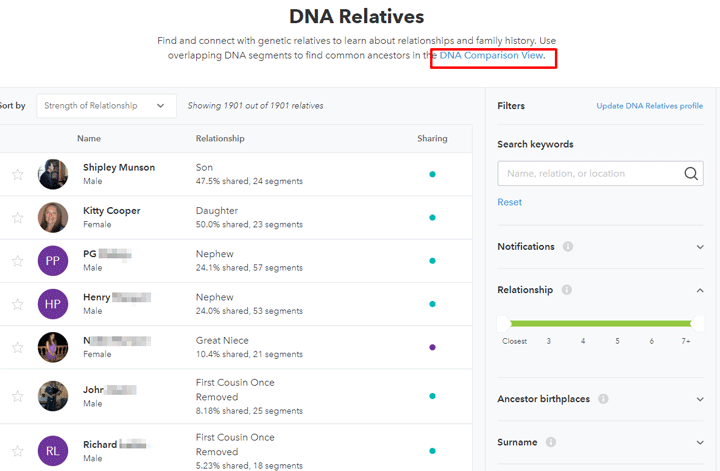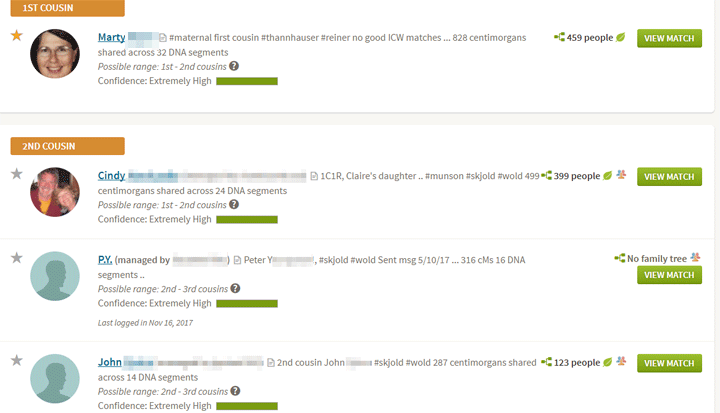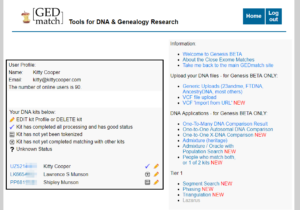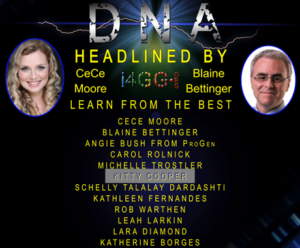There have been some good changes to the relative matching displays at 23andMe. Finally when I get a new match, I can quickly compare them to several other known relatives from that first DNA comparison page. One of the features I have always loved, that 23andMe has but not the other testing companies, is the ability to compare my matches to each other. Seeing how much DNA they share can often help resolve how they are related.
I was surprised and delighted to see that the granddaughter of my Dad’s favorite brother got a DNA kit for Christmas and her DNA results are just in at 23andMe. So I will use her kit to show the new 23andMe displays. For privacy I will call her Nan.
When I click DNA relatives under Tools, the page it goes to no longer has two top tabs. Perhaps that confused many users. Instead there is a long sentence up top where the last few words are linked to the chromosome browser page that I like to use. I have put a red box around those words in the image below of Dad’s best matches. Of course there are other better ways to get to that browser.
When Dad gets a new relative, I typically click on their name to see how they compare to him. That next page is the one that is vastly improved.




